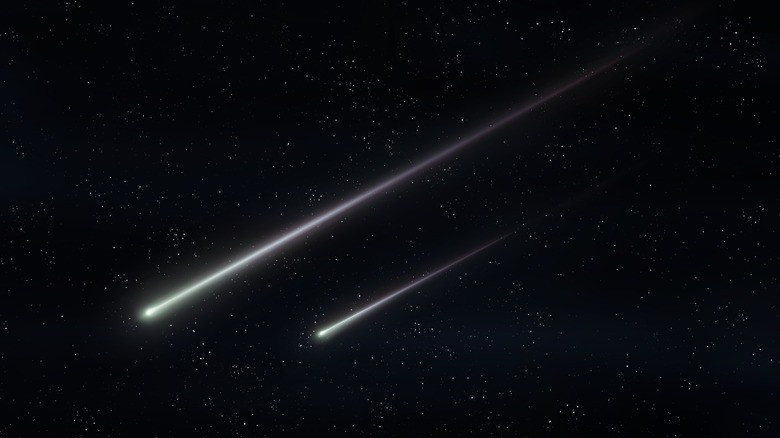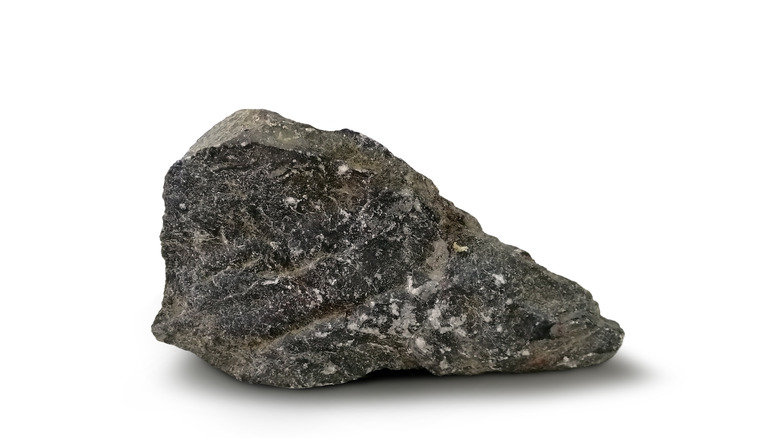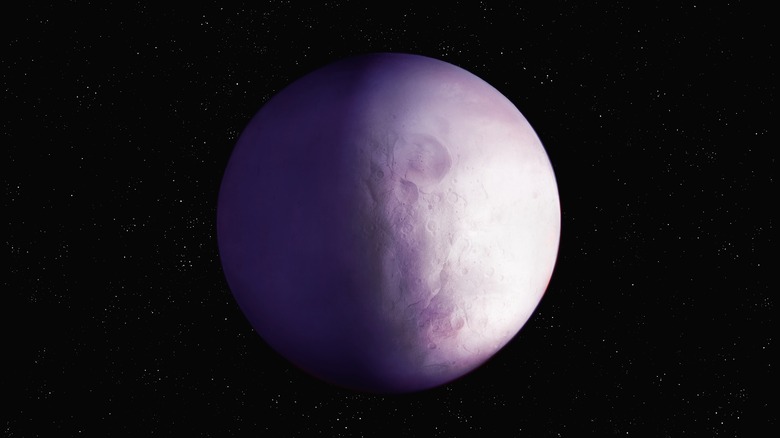The Stunning Discovery Of A 4.6 Billion-Year-Old Meteorite In The Sahara Desert
When eerie green rocks fall from the sky, only to be found by men in lab coats in far off, remote locations, the most reasonable of us can only assume a certain cape-dawning resident of Metropolis might be in trouble. But no, although the rock we will discuss here is, in fact, extra-terrestrial, Superman is safe from kryptonite ... for now. The finding came in May 2020, in the middle of the Saharan Desert, in Adrar, Algeria (via Inverse). While the meteorite may not be able to take down super-humans, it did unlock some clues to the secrets of our universe.
The rock is described to have a coarse, tannish appearance (via Lunar and Planetary Institute). Small flecks of green, yellow-green, and yellow-brown crystal can be found throughout, with what appears to be red-brown stains toward the bottom. Regardless of the mineral's unique beauty, its composition is what intrigues the scientific community.
A Groundbreaking Composition
In a study published by the Proceedings of the National Academy of Science (PNAS), the meteorite — officially dubbed Erg Chech 002 (aka EC 002) — proved to have ample amounts of andesite, a blackish-gray volcanic rock only found on our planet when tectonic plates collide (via Inverse). Basalt meteorites, which are created when magnesium and iron-rich lava become cool, are the kind often found on our planet. EC 002 was also once molten, but according to scientists, that was over 4.565 billion years ago. The tricky part is, the Earth is only supposed to be about 4.543 billion years old.
Understanding meteorites like EC 002 is difficult because there are not many samples in the world (via PNAS). However, EC 002 itself is unique, even among such a little pool of data, thanks to its spectral features. This rock is so much more than just mysterious and pretty, though — it actually can explain things about the early development of our planetary system.
What the Finding Tells Us
Due to EC 002's unique properties and a birth date preceding Earth's, scientists believe it may have been a piece of a protoplanet that broke off during the earlier development of our solar system before Earth or any of its sibling planets were born (via Inverse). Not much bigger than the moon, protoplanets are somewhat of an ancestor to planets as we know them (via Universe Today). There are several theories on our planetary system's early construction, but protoplanets may have actually served as building blocks.
The discovery of EC 002 allowed scientists to take a peek into the past, and their studies indicate that early protoplanets may have either merged with current planets or were destroyed before our planetary system's formation. The finding also suggests protoplanets developed at the very start of our solar system (via PNAS). So there you have it — while the discovery we described earlier was not, in fact, the opening scene to DC's next Superman movie, it did unlock knowledge of our universe that was never revealed before.


